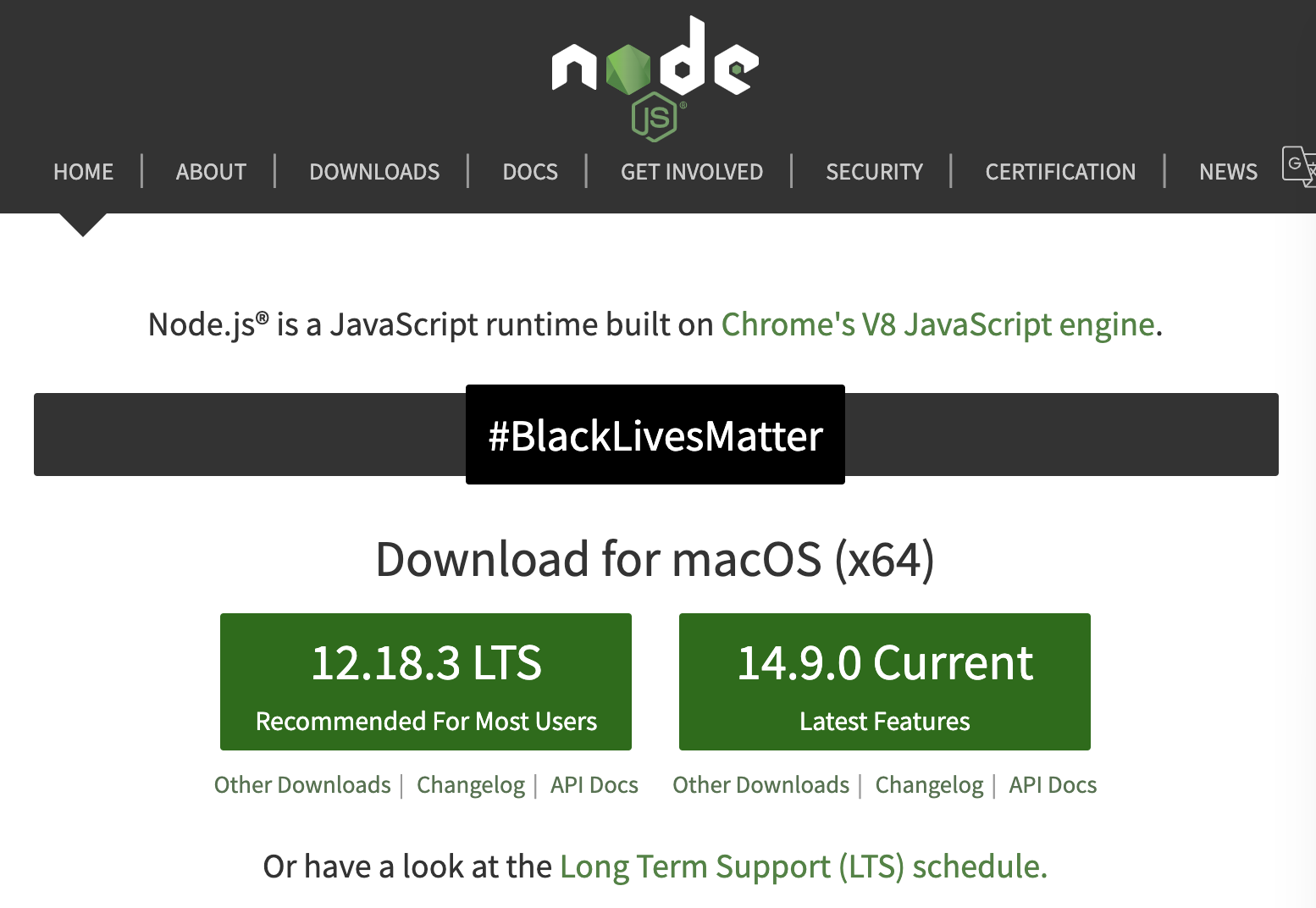
- #HOW TO TEST FOR NODE JS MAC FOR MAC#
- #HOW TO TEST FOR NODE JS MAC INSTALL#
- #HOW TO TEST FOR NODE JS MAC UPDATE#
- #HOW TO TEST FOR NODE JS MAC CODE#
To list all the installed versions, run nvm ls.Īdditionally, there are options to change the destination folder and open the folder to view files from the interface itself. When you use nvm, you can check the current version you are running by typing nvm current, which will give you the same result as node -v.
#HOW TO TEST FOR NODE JS MAC CODE#
It is also very useful to test your code with old Node versions.
#HOW TO TEST FOR NODE JS MAC INSTALL#
It allows you to easily switch the Node version, and install new versions to try and easily rollback if something breaks, for example. If you use nvm nvm is a popular way to run Node.
#HOW TO TEST FOR NODE JS MAC UPDATE#
If you did use Homebrew, upgrading Node is as simple as running brew update #makes sure Homebrew is up to date brew upgrade node Homebrew might ask you to upgrade your xCode version to compile the package. If you installed Node using Homebres (on macOS) Homebrew is a very popular way to install Node.js on a Mac. The official package contains an installer that will detect the existing version of Node.js and it will overwrite it with the new one. If you installed Node using the official package The easiest way to install Node is to download the official package from the. Node.js can be installed in multiple ways on a system, and the upgrade instructions depend on how you first installed it. Is there a variable I can check for in Node to run a.sh file in one insta.
#HOW TO TEST FOR NODE JS MAC FOR MAC#
Microsoft office 2016 for mac 15.35.0 + activator mac os x crack snow download. Examplesįind complete TestCafe test suites and file organization examples on platformOS sites in the following public repos:Ĭongratulations! You have installed TestCafe.I'm writing a couple of node shell scripts for use when developing on a platform.

Find a list of available commands and options here. If it hasn't been installed, running this command gives a command not found error.Īfter installed, you can run TestCafe from a command line by using the testcafe command. If TestCafe has been installed correctly, running this command displays the version number. Use the following command to test if you've installed TestCafe successfully: + 322 packages from 239 contributors in 18.038s usr/local/bin/testcafe -> /usr/local/lib/node_modules/testcafe/bin/testcafe-with-v8-flag-filter.js You can follow the installation process in your command line (something similar to this will be displayed after the process has ended): Installing TestCafe is a two-step process:Įnter the following in your command line to install TestCafe: You should also be familiar with TestCafe: To follow the steps in this tutorial, you need NPM (Node.js Package Manager), that you have already installed to install and update the pos-cli. TestCafe runs on Windows, MacOS, and Linux, and supports desktop, mobile, remote and cloud browsers (UI or headless).

As it doesn't use WebDriver to work with browsers, it only requires a minimal testing environment and is installed with a single command. Unlike other solutions, TestCafe is not built on Selenium, which allows it to provide features that are not available in Selenium-based tools (for example, testing on mobile devices, user roles, automatic waiting, etc.).

Together with unit and integration tests, end-to-end tests play an important role in your quality assurance process and can help you confirm that the application works as expected. It tests the application and its components for integration and data integrity in a product-like setting by simulating a real user scenario. This guide will help you install TestCafe, an open-source, Node.JS-based end-to-end testing framework for web apps.Įnd-to-end testing is a technique to test an application flow from start to finish.


 0 kommentar(er)
0 kommentar(er)
